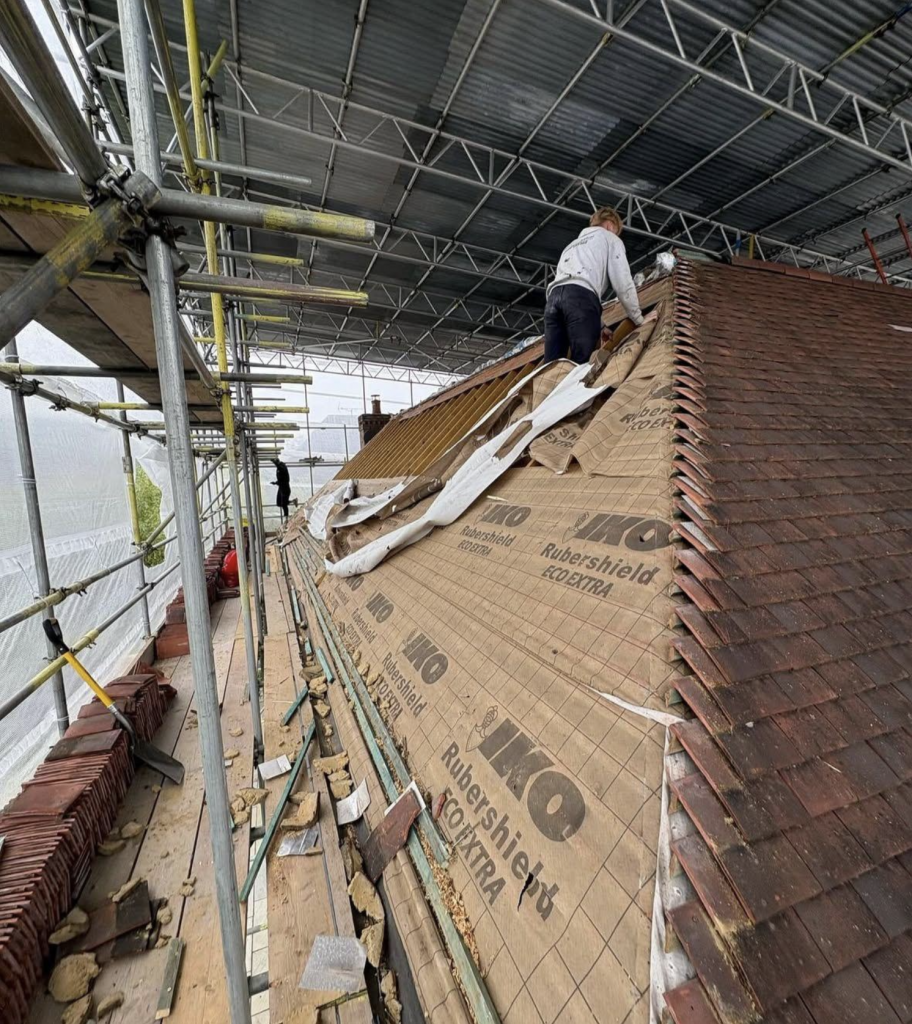Your roof is one of those things you probably don’t think about—until it starts leaking or a tile suddenly lands in your garden. But by then, the damage might already be done. At Surrey Roofer, we’ve seen time and time again how a few small issues, left too long, can snowball into major problems. The trick is spotting the signs early, before the wind and rain do their worst.
Here are ten clear signs your roof might be crying out for attention.
1. Water Stains on Ceilings or Walls
If you spot brown or yellowish patches on your ceilings or walls, particularly after it rains, it’s a good bet your roof has a leak. It doesn’t take a gaping hole—just a crack or two where water can sneak in. Left unchecked, you’ll not only have roof issues but possibly damp, mould, and structural damage to deal with too.
2. Missing or Slipped Tiles
It’s fairly easy to notice if you’ve got a few tiles missing—either from looking up from the ground or by spotting fragments on the driveway or in the garden. Strong winds, heavy rain, and general wear and tear can all cause tiles to shift or fall. Once they’re gone, the underlay is exposed and vulnerable.
3. Sagging Roofline
Your roof should have a straight, even profile. If you notice a dip or a sag in the ridge line or any part of the roof, that’s not normal. It could be a sign that the structure beneath—timber or supports—has weakened. This often means water has got in and done some quiet damage over time.
4. Moss and Algae Buildup
Moss may seem harmless, but it traps moisture against your roof. Over time, that moisture can seep into the tiles and lead to rot or degradation, particularly with older, porous roofing materials. If your roof is looking more green than grey or red, it’s time for a clean—and possibly a closer look.
5. Light Coming Through the Loft
A quick check in the loft on a bright day can tell you a lot. If you see any daylight coming through where it shouldn’t, that’s a sure sign your roof has holes or cracks. Even small gaps can let water and cold air in, and rodents if you’re unlucky.
6. Damaged Flashing
Flashing is the thin metal used to seal roof edges, chimneys, and anywhere the roof meets a vertical surface. When it starts to crack, bend, or pull away, water has an open route into your home. It’s easy to overlook unless you’re up there inspecting it properly, but damaged flashing is a major cause of leaks.
7. Blocked or Overflowing Gutters
Clogged gutters don’t just mean water spilling over the edge. They can also indicate that roof materials—like grit from shingles or pieces of tile—are breaking off and ending up in the guttering. It’s worth checking where all that debris is coming from.
8. Higher Energy Bills
An inefficient roof can mean heat escaping in the winter and unwanted heat getting in during the summer. If your energy bills are creeping up and there’s no obvious cause, your roof insulation (or lack of it) might be to blame. It’s not just about comfort—it can also be a sign of unseen structural issues.
9. Ageing Roof
How old is your roof? Most materials have a lifespan. Plain concrete tiles might last 30–40 years, while slate can go a lot longer. If your roof is approaching the end of its expected life, it’s worth getting a proper inspection, even if nothing seems wrong yet. You might avoid an emergency by planning ahead.
10. A General Feeling Something’s Not Right
This one’s not very technical, but we hear it often. Homeowners saying, “It just doesn’t look right anymore,” or “I’ve got a bad feeling about it.” Whether it’s a slight sag, the odd creaking noise during storms, or a few tiles that always seem to move after windy nights—trust your gut. If something looks or feels off, it usually is.
If you’ve spotted any of these signs—or even if you’re just unsure—it’s worth having it looked at. At Surrey Roofer, we offer honest, no-pressure inspections across the county. It’s better to catch problems early while they’re easy to fix, rather than waiting for that dreaded drip through the ceiling in the middle of winter.
